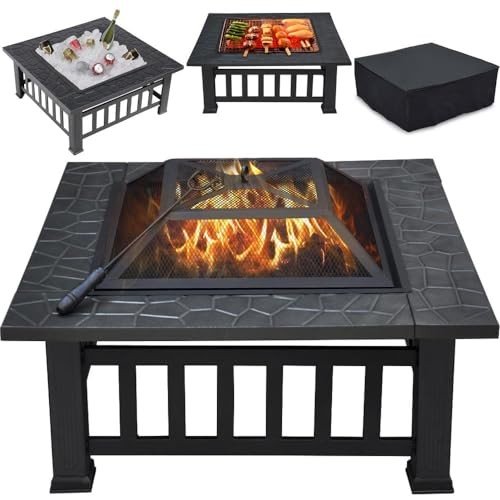A Comprehensive Guide to Buying a Fireplace: Choosing the Right Fit for Your Home
Fireplaces have actually long been a central feature in homes, offering heat, ambiance, and a meeting place for households and pals. Whether you're constructing a new home, remodeling an existing area, or just aiming to update your existing setup, buying the ideal fireplace can make all the difference. This guide aims to offer a comprehensive introduction of various fireplace alternatives, considerations for installation, and suggestions for upkeep.
Types of Fireplaces
When thinking about a new fireplace, property buyers will find numerous types to select from. Each type includes its own special functions, advantages, and downsides. Below is a breakdown of common fireplace types:
| Fireplace Type | Description | Pros | Cons |
|---|---|---|---|
| Wood-Burning | Traditional choice utilizing logs for fuel. | Authentic experience, strong heat source. | Requires routine maintenance, fuel storage, and ventilation. |
| Gas | Utilizes gas or lp, typically with a vented or ventless choice. | Easy to use, less maintenance than wood. | Needs a gas line, may lose some atmosphere. |
| Electric | Plug-and-play alternatives with no requirement for venting, providing simulated flames. | No setup essential, safe for houses. | Lacks the credibility of real flames. |
| Ethanol | Utilizes bio-ethanol fuel in a portable or fixed unit. | Tidy burning, no venting needed. | More costly fuel expenses, limited heat output. |
| Pellet | Burns compressed wood pellets for fuel, comparable to wood-burning. | Eco-friendly, low emissions. | Needs electricity for operation, specific fuel required. |
Secret Considerations When Buying a Fireplace
1. Space Size and Layout
The fireplace ought to appropriate for the size and layout of the space. A fireplace that is too large might overwhelm the space, while one that is too small may not efficiently heat the location.
2. Heating Needs
Consider just how much heat you need for the space. An electric fireplace may be sufficient for a smaller room, while a wood-burning or gas fireplace is ideal for bigger locations needing considerable heat.
3. Visual and Style
Fireplaces come in a variety of styles, from contemporary to rustic. It's necessary to choose one that matches the overall decoration of your home.
Popular Fireplace Styles:
- Modern sleek designs
- Traditional elaborate finishes
- Rustic stone or brick
- Minimalist electric models
4. Fuel Source
Choosing a fuel source is crucial for function as well as choice. House owners need to consider the accessibility, expense, and convenience of the fuel they wish to use.
5. Installation Requirements
Comprehend the installation requirements, as some fireplaces, especially wood-burning units, require a chimney, while others might be more simple to set up. Best Fireplaces may need to seek advice from experts to make sure appropriate setup and compliance with local codes.
6. Spending plan
Fireplaces can vary considerably in cost from economical electric models to high-end gas and wood-burning units. Aside from the preliminary purchase cost, think about installation costs and continuous fuel expenditures.
Installation Process
Setting up a fireplace is a substantial job that may need professional assistance. Here is a summary of the basic actions involved:
Planning and Design
- Assess locations and styles based on style and heating requirements.
Get Necessary Permits
- Examine local structure guidelines and get any needed authorizations for setup.
Choose a Professional Installer
- Think about working with a licensed professional for safety and compliance with codes.
Prepare the Installation Site
- Clear the area and set up any required materials or support structures.
Follow Manufacturer Instructions
- Follow specific standards supplied by the fireplace producer during installation.
Final Inspection
- After setup, guarantee a final inspection is performed to confirm the system's security and performance.
Upkeep Tips for Your Fireplace
To make sure longevity and optimal efficiency of your fireplace, regular upkeep is crucial. Here are some ideas to keep your fireplace in great shape:
Wood-Burning Fireplaces
- Clean the chimney a minimum of once a year to avoid creosote buildup.
- Usage seasoned wood for less smoke and much better efficiency.
- Inspect the fireplace structure for cracks or deterioration.
Gas Fireplaces
- Check gas connections for leakages periodically.
- Clean the glass and the burner for optimal performance.
- Set up annual maintenance with a qualified service technician.
Electric Fireplaces
- Dust and tidy the unit regularly.
- Examine connections and replace any malfunctioning parts if needed.
- Make sure the unit is shimmering tidy before use each season.
Ethanol and Pellet Fireplaces
- Keep fuel sources saved safely and far from heat.
- Tidy the burner and ensure no obstructions take place.
Frequently asked questions
Q: What kind of fireplace is most effective for heating?A: Gas fireplaces and
pellet ranges tend to have greater efficiencies, converting more energy to heat compared to wood-burning choices.
Q: Can I set up a fireplace in any room?A: While many spaces can accommodate a fireplace, ventilation, available space, and local regulations might affect expediency.
Q: Are electric fireplaces safe?A: Yes,
electric fireplaces are typically extremely safe, include no real flames, and often consist of features that avoid overheating.
Q: How do I pick the best size fireplace?A: Consider the square video of the room and seek advice from with suppliers about recommended BTU ratings for heating effectiveness. Buying a fireplace is a considerable
choice that can significantly improve your living area. By considering the kind of fireplace, your heating needs, installation requirements, and continuous upkeep, property owners can pick the perfect unit to meet their choices and enhance their home for many years to come. Whether you favor a traditional wood-burning fireplace or a modern electric option, the ideal fireplace will provide warmth, comfort, and design that can be valued for generations.

